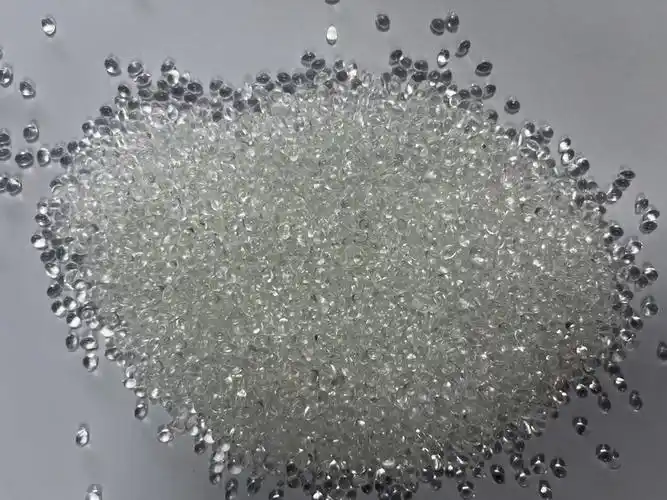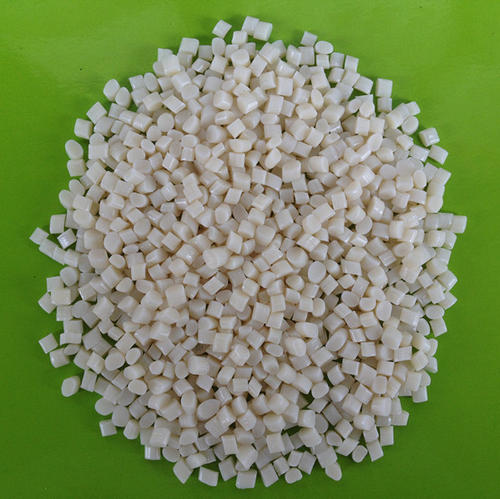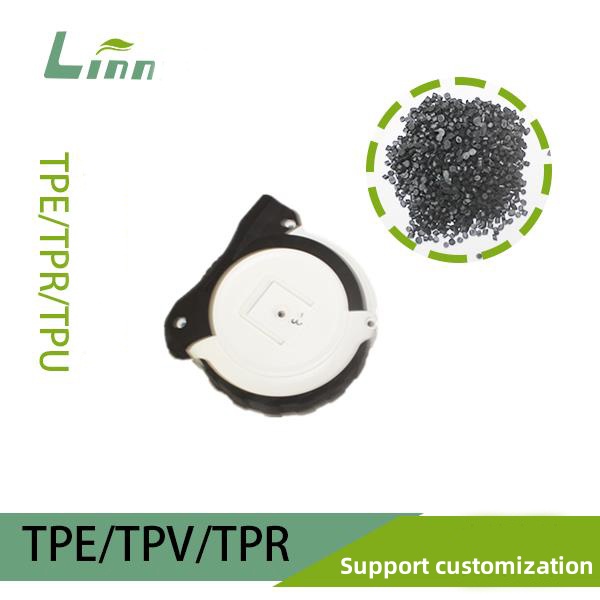In the world of plastic extrusion, TPE (Thermoplastic Elastomer) soft-hard co-extrusion is a fascinating and challenging process. It combines the flexibility and softness of TPE with the rigidity and strength of another polymer, typically a harder plastic, to create products with unique properties and applications. However, one of the critical aspects of this process is cooling, especially when it comes to the soft TPE material. As an industry expert with extensive experience in TPE processing and co-extrusion techniques, I’ve encountered numerous challenges related to cooling and have developed effective strategies to address them. In this article, I’ll share my insights and practical tips on how to water-cool the soft material in TPE soft-hard co-extrusion.
Understanding the Importance of Cooling in TPE Soft-Hard Co-Extrusion
Before diving into the specifics of water cooling, it’s essential to understand why cooling is so crucial in the TPE soft-hard co-extrusion process.
1. Material Properties and Dimensional Stability
TPEs are known for their thermoplastic nature, meaning they can be melted and reshaped multiple times. However, during the extrusion process, the TPE needs to be rapidly cooled to solidify and maintain its shape. If the cooling is not adequate, the TPE may remain in a semi-molten state, leading to dimensional instability, warping, or even collapse of the extruded profile.

2. Bonding and Interface Quality
In soft-hard co-extrusion, the soft TPE material is bonded to the harder polymer substrate. Proper cooling ensures that the TPE solidifies at the right rate, allowing for good adhesion and a strong interface between the two materials. If the cooling is too slow or uneven, it can lead to poor bonding, delamination, or other defects at the interface.
3. Production Efficiency and Cost
Efficient cooling is also essential for maintaining high production rates and reducing costs. If the cooling process is too slow, it can limit the line speed, increasing production time and costs. Additionally, inadequate cooling may require additional post-processing steps, such as annealing or trimming, to correct defects, further adding to the cost.
Challenges in Water Cooling TPE Soft Material
While water cooling is a common and effective method for cooling extruded plastics, it presents unique challenges when it comes to TPE soft material.
1. Temperature Sensitivity
TPEs are highly temperature-sensitive materials. If the water temperature is too low, it can cause the TPE to solidify too quickly, leading to stress cracking or other defects. On the other hand, if the water temperature is too high, it may not cool the TPE effectively, resulting in prolonged solidification times and potential dimensional issues.
2. Flow Characteristics
The soft and flexible nature of TPE can make it challenging to achieve uniform cooling. The TPE may tend to deform or stick to the cooling surfaces, especially if the flow is not properly controlled. This can lead to uneven cooling, resulting in variations in the material properties and dimensional accuracy of the extruded profile.
3. Water Quality and Maintenance
The quality of the cooling water and the maintenance of the cooling system are also critical factors. Impurities or contaminants in the water can cause scaling or corrosion on the cooling surfaces, reducing heat transfer efficiency and potentially contaminating the TPE material. Additionally, proper maintenance of the cooling system, including regular cleaning and inspection, is essential to ensure consistent and reliable cooling performance.

Strategies for Effective Water Cooling of TPE Soft Material
Now that we’ve identified the challenges, let’s explore some effective strategies for water cooling the soft material in TPE soft-hard co-extrusion.
1. Optimize Water Temperature and Flow Rate
The key to effective water cooling is finding the right balance between water temperature and flow rate.
Water Temperature: Start by setting the water temperature slightly below the solidification temperature of the TPE. This will ensure that the TPE solidifies quickly enough to maintain dimensional stability but not so fast that it causes stress cracking. You may need to conduct some trials to determine the optimal water temperature for your specific TPE grade and extrusion conditions.
Flow Rate: Adjust the water flow rate to ensure that the TPE is cooled uniformly. A higher flow rate can help to remove heat more efficiently, but it may also increase the risk of turbulence or deformation of the TPE. Conversely, a lower flow rate may not provide sufficient cooling, leading to prolonged solidification times. Experiment with different flow rates to find the one that works best for your application.
2. Design and Optimize the Cooling System
The design of the cooling system plays a crucial role in achieving uniform and efficient cooling.
Cooling Channels: Incorporate cooling channels in the extrusion die or cooling fixture to ensure that the water flows evenly over the TPE surface. The channels should be designed to minimize turbulence and maximize heat transfer efficiency.
Cooling Fixtures: Use cooling fixtures that are specifically designed for TPE soft-hard co-extrusion. These fixtures should provide adequate support and guidance for the extruded profile while allowing for efficient water cooling. Consider using fixtures with adjustable cooling zones or spray nozzles to fine-tune the cooling process.
Water Circulation and Filtration: Implement a water circulation system that ensures a constant supply of clean, cool water to the cooling channels. Additionally, install filtration systems to remove impurities and contaminants from the water, preventing scaling and corrosion on the cooling surfaces.

3. Control the Extrusion Process Parameters
The extrusion process parameters, such as line speed, melt temperature, and pressure, can also affect the cooling process.
Line Speed: Adjust the line speed to ensure that the TPE has enough time to solidify before it exits the cooling zone. If the line speed is too high, the TPE may not have enough time to cool, leading to dimensional issues. Conversely, a lower line speed may increase production time and costs. Find the optimal line speed that balances production efficiency with cooling requirements.
Melt Temperature: Control the melt temperature of the TPE to ensure that it is within the optimal range for extrusion and cooling. If the melt temperature is too high, it may cause the TPE to degrade or become too fluid, making it difficult to cool. On the other hand, if the melt temperature is too low, it may lead to poor flow and uneven cooling.
Pressure: Maintain consistent pressure during the extrusion process to ensure that the TPE flows evenly and fills the die cavities properly. Fluctuations in pressure can cause variations in the material properties and dimensional accuracy of the extruded profile, affecting the cooling process.
4. Use Cooling Aids and Additives
In some cases, using cooling aids or additives can help to improve the cooling performance of TPE soft material.
Cooling Aids: Consider using cooling aids, such as water-soluble lubricants or release agents, to reduce friction and improve the flow of the TPE during the cooling process. These aids can help to prevent sticking or deformation of the TPE on the cooling surfaces.
Additives: Some TPE grades may benefit from the addition of cooling-enhancing additives, such as nucleating agents or thermal conductors. These additives can help to improve the heat transfer efficiency of the TPE, allowing for faster and more uniform cooling.
5. Monitor and Adjust the Cooling Process
Continuous monitoring and adjustment of the cooling process are essential for maintaining consistent and high-quality results.
Temperature Sensors: Install temperature sensors in the cooling zone to monitor the water temperature and the temperature of the TPE during the cooling process. This data can help you to identify any issues or variations in the cooling performance and make adjustments as needed.
Visual Inspection: Conduct regular visual inspections of the extruded profile to check for any signs of defects or dimensional issues. If you notice any problems, such as warping, cracking, or uneven cooling, investigate the cause and make adjustments to the cooling process or extrusion parameters.
Process Optimization: Based on the monitoring and inspection results, continuously optimize the cooling process and extrusion parameters to improve efficiency, reduce costs, and enhance product quality.

Table: Summary of Strategies for Water Cooling TPE Soft Material
To provide a more structured overview of the strategies discussed above, I’ve compiled the following table.
| Strategy | Description |
|---|---|
| Optimize Water Temperature and Flow Rate | Set the water temperature slightly below the solidification temperature of the TPE and adjust the flow rate for uniform cooling. |
| Design and Optimize the Cooling System | Incorporate cooling channels, use fixtures designed for TPE co-extrusion, and implement water circulation and filtration systems. |
| Control the Extrusion Process Parameters | Adjust line speed, melt temperature, and pressure to ensure proper flow and cooling of the TPE. |
| Use Cooling Aids and Additives | Consider using cooling aids or additives to improve flow and heat transfer efficiency during cooling. |
| Monitor and Adjust the Cooling Process | Install temperature sensors, conduct visual inspections, and continuously optimize the cooling process based on results. |
Case Study: Improving Water Cooling in a TPE Soft-Hard Co-Extrusion Application
To illustrate the effectiveness of the strategies discussed above, let’s consider a real-world case study from a manufacturer of automotive weatherstripping.
Problem: The manufacturer was experiencing issues with water cooling the soft TPE material in their soft-hard co-extrusion process. The TPE was not solidifying uniformly, leading to dimensional variations and warping of the extruded weatherstripping.
Solution: The manufacturer implemented the following strategies to improve water cooling:
Optimize Water Temperature and Flow Rate: They adjusted the water temperature to be slightly below the solidification temperature of the TPE and increased the flow rate to ensure uniform cooling.
Design and Optimize the Cooling System: They redesigned the cooling channels in the extrusion die and installed a new cooling fixture with adjustable spray nozzles to fine-tune the cooling process.
Control the Extrusion Process Parameters: They adjusted the line speed and melt temperature to ensure that the TPE had enough time to solidify before exiting the cooling zone.
Monitor and Adjust the Cooling Process: They installed temperature sensors in the cooling zone and conducted regular visual inspections of the extruded weatherstripping. Based on the results, they made continuous adjustments to the cooling process and extrusion parameters.
Result: After implementing these strategies, the manufacturer saw a significant improvement in the water cooling performance of the soft TPE material. The dimensional variations and warping issues were resolved, and the quality of the extruded weatherstripping improved dramatically. The manufacturer was able to increase production efficiency, reduce costs, and enhance customer satisfaction.

Related Q&A
Q1: What are the common signs of inadequate water cooling in TPE soft-hard co-extrusion?
A1: Common signs of inadequate water cooling include dimensional variations, warping, cracking, or uneven cooling of the TPE material. You may also notice poor bonding between the soft and hard materials or defects at the interface.
Q2: How can I determine the optimal water temperature for cooling TPE soft material?
A2: The optimal water temperature depends on the specific TPE grade and extrusion conditions. Start by setting the water temperature slightly below the solidification temperature of the TPE and conduct trials to determine the best temperature for your application.
Q3: Are there any alternatives to water cooling for TPE soft-hard co-extrusion?
A3: Yes, there are alternatives to water cooling, such as air cooling or oil cooling. However, water cooling is often preferred for its efficiency and cost-effectiveness. The choice of cooling method depends on the specific requirements of your application.
Q4: How can I prevent scaling or corrosion on the cooling surfaces during water cooling?
A4: To prevent scaling or corrosion, implement a water circulation system with filtration to remove impurities and contaminants. Additionally, consider using corrosion-resistant materials for the cooling channels and fixtures and conduct regular maintenance and cleaning of the cooling system.
Q5: Can I use the same cooling water for multiple extrusion lines or products?
A5: It’s generally not recommended to use the same cooling water for multiple extrusion lines or products, as it can lead to cross-contamination and affect the quality of the extruded materials. Instead, consider using separate cooling systems or implementing a water treatment and recycling system to ensure clean and consistent cooling water for each line or product.





